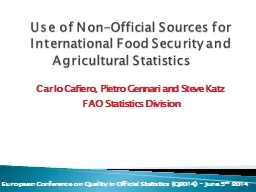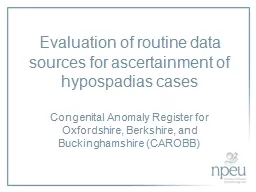PPT-Data Sources for CPPIs:
Author : alida-meadow | Published Date : 2019-11-18
Data Sources for CPPIs An Overview and Strategy Mick Silver Paper Presented at the EC International Conference on Real Estate Statistics 2022 February 2019 Luxembourg
Presentation Embed Code
Download Presentation
Download Presentation The PPT/PDF document "Data Sources for CPPIs:" is the property of its rightful owner. Permission is granted to download and print the materials on this website for personal, non-commercial use only, and to display it on your personal computer provided you do not modify the materials and that you retain all copyright notices contained in the materials. By downloading content from our website, you accept the terms of this agreement.
Data Sources for CPPIs:: Transcript
Download Rules Of Document
"Data Sources for CPPIs:"The content belongs to its owner. You may download and print it for personal use, without modification, and keep all copyright notices. By downloading, you agree to these terms.
Related Documents














